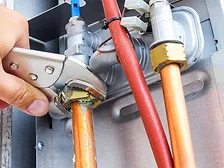John Siegenthaler: Hydronics Workshop
HYDRONICS WORKSHOP
Air-to-water and water-to-water heat pumps are destined to claim increasing market share in future hydronic systems.
Read More
John Siegenthaler: Game changer
Heat pumps and chilled water cooling will change the future of hydronics.
September 29, 2021
Hydronics Workshop
John Siegenthaler: Freedom of (fuel) choice
Using a heat pump to displace high-priced fuel.
September 2, 2021
Hydronics Workshop
John Siegenthaler: What I look for
A 'dirty dozen' things that point to trouble ahead.
July 29, 2021
John Siegenthaler: Your customers don’t pay for COPs
Understanding coefficient of performance.
July 1, 2021
John Siegenthaler: Keeping your cool
Important details for small-scale chilled water cooling.
May 26, 2021
John Siegenthaler: A diversionary detail
Another circumstance where hydronic versatility adds value.
April 27, 2021
John Siegenthaler: 4-way versus 3-way motorized mixing valves
Which is the better choice, and why?
April 1, 2021
John Siegenthaler: Unique circumstances
Multi-zone heating, single zone cooling.
February 26, 2021
John Siegenthaler: Cascading heat pumps
Electrically-powered heat pumps will continue to gain market share.
January 23, 2021
Keep your content unclogged with our newsletters!
Stay in the know on the latest plumbing & piping industry trends.
JOIN TODAY!Copyright ©2025. All Rights Reserved BNP Media.
Design, CMS, Hosting & Web Development :: ePublishing






